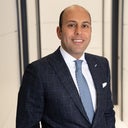Thank you for your question. This is a very important and nuanced situation. Aqualift is a type of hydrophilic gel filler (usually polyacrylamide hydrogel or a similar formulation). While it may remain stable and asymptomatic for many years, it is not biologically inert long term and can cause complications over time, including inflammatory reactions, migration, encapsulation (forming of nodules), and potentially lead to infection. Even if the product currently seems stable, that doesn’t guarantee it will stay that way, especially if disturbed by trauma (like fat grafting or liposuction in the area). To answer your question, technically, yes. Fat can be grafted on top of the hydrogel. However, it is not recommended as there is a risk the fat may not integrate well because the gel creates a foreign body environment. The gel may impede vascularization, reducing fat graft survival. Injecting fat may disturb the hydrogel, potentially triggering migration or inflammation. So, while it’s possible, it’s not considered the safest or most effective approach in many cases. Removing any foreign body material is always recommended first. Ideally. removal would be the safest path forward before fat transfer. This ensures as much foreign material is removed as possible, reducing the risk of adverse reactions. It allows for a more biologically “clean” plane for fat graft survival. It enables better long-term aesthetic results and reduces unpredictability. A consultation with a Board-Certified surgeon experienced in biopolymer/hydrogel/silicone removal is crucial. Typically, the surgical steps are as follows - Stage 1: Removal of hydrogel/silicone via open excision approach. Stage 2: performed typically within 24-48 hours after stage 1. This includes a secondary removal after wound vac placement and an internal buttock lift. After a 3-month recovery/healing process, we can perform Stage 3: Fat grafting once inflammation has resolved and tissue planes are healthy. Please keep in mind, these procedures can be covered by insurance.


